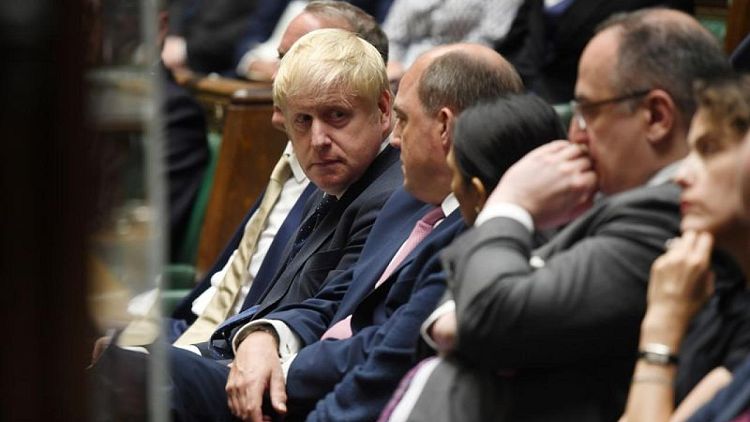By Kylie MacLellan
LONDON - Prime Minister Boris Johnson on Tuesday set out plans to raise taxes on workers, companies and some shareholders by 12 billion pounds ($16.5 billion) a year to try to tackle a backlog in the health system and fix how Britain's adult social care is funded.
Below are the details of the government's plans:
HEALTH AND SOCIAL CARE LEVY
From April 2022 the government will introduce new 1.25% levies on both earned income and on employers' wage bills to raise funds for health and social care. The levy will be based on National Insurance contributions and will be paid by working adults including - from 2023 - those over state pension age.
NATIONAL INSURANCE RISE
In order to bring the money in as quickly as possible, for the first year the levy will be raised via a temporary hike in National Insurance social security contributions, and then from April 2023 it will become a separate levy.
The rates of National Insurance contributions will increase by 1.25 percentage points for both employers and employees until April 2023, when it will revert back to its existing level.
National Insurance is not paid by people who are over pension age but still working.
The government said that in 2022-23, a typical basic rate taxpayer earning the median basic-rate taxpayer's income of 24,100 pounds would pay an extra 180 pounds in National Insurance, while a typical higher-rate taxpayer earning the median higher rate taxpayer’s income of 67,100 pounds would be expected to pay an extra 715 pounds.
DIVIDEND TAX RISE
From April 2022 the government will also raise by 1.25 percentage points the rate of tax paid by individuals who receive dividend income from shares.
Shares held in tax-exempt savings accounts known as ISAs are not subject to dividend tax. Due to a 2,000 pound tax-free allowance for dividend income, around 60% of people with dividend income outside of ISAs would not be affected, the government said.
HOW MUCH MONEY WILL IT RAISE?
The government said the new measures would raise around 36 billion pounds over the next three years, of which 5.4 billion pounds would be invested in adult social care.
Of the 12 billion pounds on average raised per year, the government said around 11.4 billion pounds would come from the levy and around 0.6 billion pounds from the increase to dividend tax rates.
The government said Scotland, Wales and Northern Ireland would receive an extra 2.2 billion pounds each year on average as a result of the health and social care package.
HOW MUCH WILL PEOPLE HAVE TO PAY TOWARDS THEIR CARE?
Previously people were not eligible for help with the cost of care if they had savings worth more than 23,250 pounds.
Under the new plans, from October 2023 anyone with assets under 20,000 pounds will have their care costs fully covered by the state.
Those with between 20,000 and 100,000 pounds of assets will have to contribute towards the cost of their care but will also receive means-tested state support on a tapered basis.
The government said no one would have to pay more than 86,000 pounds towards the cost of their care over their lifetime.
($1 = 0.7256 pounds)
